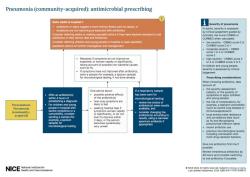Is propofol a vesicant?
Propofol is a sedative hypnotic medication commonly used for induction and maintenance of general anesthesia. It is also used for sedation for procedures, such as endoscopy and colonoscopy. Propofol is a safe and effective medication when used correctly, but there are some potential risks associated with its use. One of these risks is vesication, or blistering of the skin.
Vesication can occur when propofol extravasates, or leaks out of the vein into the surrounding tissues. This can happen if the needle is inserted incorrectly, or if the patient moves during the injection. Extravasation can also occur if the propofol is administered too quickly.
Propofol is a vesicant because it is a hypertonic solution. This means that it has a higher concentration of salt than the surrounding tissues. When hypertonic solutions extravasate, they draw water from the surrounding cells, causing them to swell and rupture. This can lead to tissue damage and blistering.
The risk of vesication from propofol is low, but it is important to be aware of the potential risks. Vesication can be a serious complication, and it can lead to long-term problems, such as scarring and nerve damage.
To reduce the risk of vesication from propofol, it is important to use the correct technique for injection. The needle should be inserted into a vein that is large enough to accommodate the flow of propofol, and the injection should be administered slowly. It is also important to monitor the patient's injection site for signs of extravasation, such as swelling, redness, and pain. If extravasation occurs, the injection should be stopped immediately and the patient should be evaluated by a healthcare professional.
Here are some additional tips to reduce the risk of propofol extravasation:
- Use a vein that is large enough to accommodate the flow of propofol.
- Avoid injecting propofol into veins that are close to joints or nerves.
- Administer the propofol slowly.
- Monitor the patient's injection site for signs of extravasation.
- If extravasation occurs, stop the injection immediately and evaluate the patient.
If you have any concerns about the risk of vesication from propofol, be sure to talk to your doctor.
Propofol and Vesicant Properties: Is It a Vesicant?
Propofol, a commonly used intravenous anesthetic agent, has garnered attention in recent years due to concerns about its vesicant properties. In this article, we will delve into the debate surrounding propofol and its potential vesicant nature, exploring the medication's safety profile, the investigations conducted, and the considerations when administering propofol.
1. Understanding Propofol
Propofol is a widely utilized medication in the medical field, primarily for inducing and maintaining anesthesia during surgical procedures. Its rapid onset and short duration of action make it a favored choice among anesthesiologists. However, despite its efficacy, questions have arisen regarding its safety profile, specifically in relation to its vesicant potential.
2. Vesicant Properties and Concerns
A vesicant is a substance that, when administered intravenously, has the potential to cause tissue damage and blistering. Concerns have been raised about propofol's vesicant properties, as tissue injuries associated with its administration have been reported. These injuries, often referred to as "propofol infusion syndrome," can range from mild erythema and swelling to severe tissue necrosis.
3. Medication Safety Investigations
To address these concerns, extensive investigations into propofol's vesicant properties have been conducted. These studies have explored various aspects, including:
3.1. Incidence of Vesicant Reactions
Researchers have sought to determine the frequency and severity of vesicant reactions associated with propofol administration. Data collection and analysis have been instrumental in assessing the true extent of the issue.
3.2. Contributing Factors
Identifying contributing factors that increase the risk of propofol-induced tissue damage has been a key focus. Variables such as infusion rate, concentration, and patient-specific factors have been studied to better understand their impact.
3.3. Mitigation Strategies
Efforts have been made to develop strategies to mitigate the risks associated with propofol administration. These strategies encompass proper dosing, dilution, and careful monitoring of patients during and after propofol infusion.
Propofol Administration: Assessing Vesicant Concerns
When administering propofol, healthcare providers must remain vigilant and take precautions to minimize the risk of vesicant reactions. Some essential considerations include:
4.1. Dilution and Preparation
Propofol should be appropriately diluted with compatible solutions before administration. Dilution reduces the concentration of propofol, potentially lowering its vesicant properties.
4.2. Vein Selection
Careful vein selection and assessment are crucial. Smaller peripheral veins may be more susceptible to irritation, making proper cannula placement essential.
4.3. Infusion Rate
Monitoring the infusion rate is vital to prevent rapid administration, which can increase the risk of tissue damage. Healthcare providers should follow recommended infusion guidelines.
4.4. Patient Monitoring
Close monitoring of patients receiving propofol is essential. Observing for signs of tissue irritation or injury, such as erythema, swelling, or pain at the injection site, can prompt timely intervention.
5. Conclusion
The debate surrounding propofol's vesicant properties continues to evolve as more research is conducted and safety measures are refined. While propofol remains a valuable medication in clinical practice, healthcare providers must exercise caution and adhere to established safety protocols to minimize the risk of vesicant reactions. Staying informed about the latest developments in propofol safety is essential for ensuring the well-being of patients undergoing anesthesia and sedation procedures.












